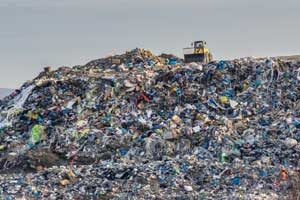 Do you ever wonder what happens to the fabric scraps you send to the landfill? Or how long it takes for those scraps to break down to soil? Americans sent 12.8 million tons of textiles to landfills in 2013. The Council for Textile Recycling states that approximately 5% of waste currently in landfills is fabric waste.
Do you ever wonder what happens to the fabric scraps you send to the landfill? Or how long it takes for those scraps to break down to soil? Americans sent 12.8 million tons of textiles to landfills in 2013. The Council for Textile Recycling states that approximately 5% of waste currently in landfills is fabric waste.
According to Fashion Revolution, “In landfill, the decomposing clothes release methane, a harmful greenhouse gas. Synthetic fabrics like polyester and lycra can take hundreds of years to biodegrade.” Research done by Down2EarthMaterials shows that thread takes 3-4 months to breakdown; cotton takes 1-5 months; and nylon clothes take 30-40 years.
There are places you can take your leftovers that will recycle scraps as well as clothing unfit to donate to resell stores. These recycling locations accept all scraps except those that are wet or contaminated with hazardous material (paint thinner, harsh cleaning products, etc.). The scraps are sent or sold to S.M.A.R.T. (Secondary Materials and Recycling Textiles), a trade association whose independent member businesses work to recycle textiles. Subsequently they are cut into rags or processed into a soft fiber filling for furniture, home insulation, car sound proofing and more. Just 5% are sent to landfills due to moisture or contamination. Nearly all textiles are recyclable.
Where to Recycle
The following is a partial list of charities and businesses that take scraps and clothing in any condition:
- Goodwill Stores – check that your location accept scraps
- Salvation Army – check that your location accept scraps
- H&M clothing stores will take bags of textiles and give you a coupon to shop in their store
- Earth911 provides a search function to find recycling locations near you
This article pertains only to textile recycling, meaning those scraps that can’t be reused by charities or schools for art projects etc. Seamstresses unite! Let’s do our part to care for Mother Earth.
References:
- Huffington Post LIFE 9/28/2016 updated 4/12/2019 by Suzy Strutner
- Some statistics from the Environmental Protection Agency
~Original article by Barbara Ward, Salt Lake Chapter. Additions by ASG.





